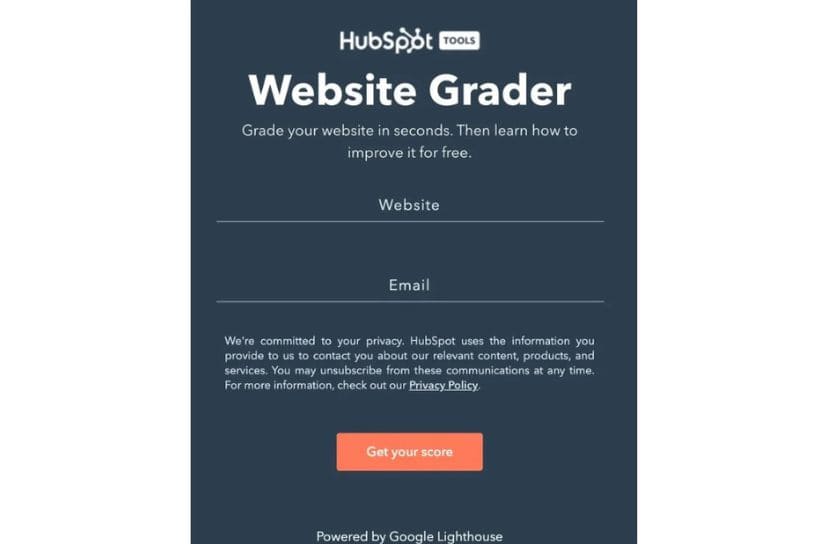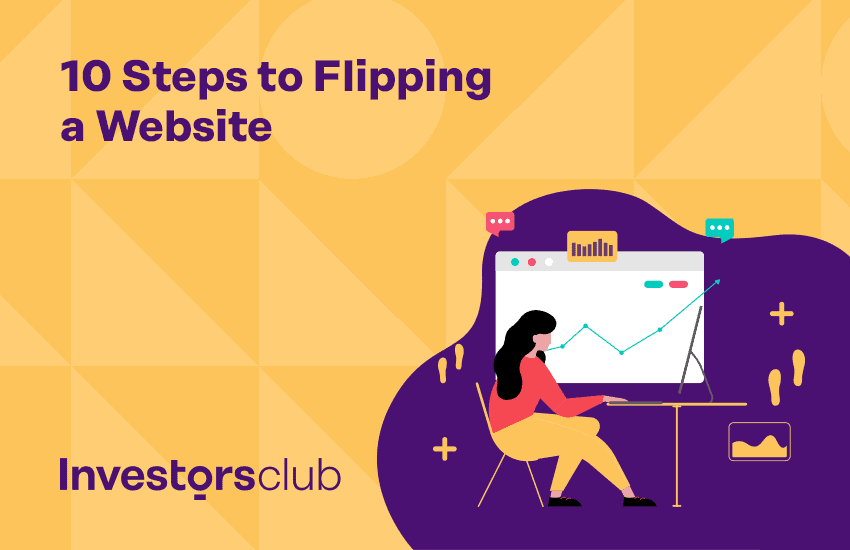Move over house flipping, there’s a new way to make money that offers lucrative returns without the need for power tools — Website flipping.
But whether you’re flipping websites or houses, the aim is the same, sell the asset for more than you bought it for (factoring in incurred expenses, of course).
But just how easy is it to flip a website for profit? Let’s find out.
Is it Possible to Flip a Website for Profit?
TLDR: Yes, but it’s not an overnight process.
It’s absolutely possible to flip a website for profit, but it isn’t the instant money-making scheme many people think it is.
Multiple factors go into whether you’ll make money on the resale, but essentially they fall into three categories:
- Purchase price
- Technical expertise
- Demand
1. Purchase Price
To maximize your chances of making a profit, you want to buy low, spend as little as possible improving it, and sell high, so the purchase price is essential.
But be cautious, a low-figure selling price doesn’t mean it’s necessarily a deal ripe for flipping. Sometimes it’s low for a reason, so be sure to do your due diligence before putting in an offer.
The good news for those wanting to flip websites is that many high-impact improvements cost little to no money at all, just time and knowledge.
This brings us nicely on to factor number 2, technical expertise.
2. Technical Expertise
If you have zero experience when it comes to building/maintaining/growing websites, then you’ve got two options. Either spend the time learning the skills you need or outsource improvement measures to a professional.
If you opt for the self-educate route, there are plenty of tutorials, guides, and online courses that will cover what you need to know. Much of it is free or low-cost, but it will take time to master, so it depends on how hands-on an investor you want to be.
If you don’t have the experience or the desire to learn, it doesn’t mean that website flipping isn’t for you. But it will mean that any potential profits just got smaller as your expenses will be higher. Not a deal-breaker but certainly something to consider when evaluating a potential investment.
3. Demand
Lastly, one of the significant factors that will impact whether you can make a profit is the demand for the niche.
The site you buy should have room for growth, and the site you sell should be bringing in solid traffic and revenue, offering the new owner a reliable and steady ROI. If the demand is low for the niche, then you’ll have a harder time growing the site and less interest when it comes to selling.
Finding the right site is crucial for website flipping success. Every listing on the Investors Club marketplace comes complete with an in-depth due diligence report, which alongside the financials and traffic data, includes a workload analysis, earning potential breakdown, and growth report (among other things).
These can be useful indicators of a site’s potential and spark ideas for future improvements.
If you can snap up a site that we’ve identified as having massive earnings potential, then you’re giving yourself a headstart. Similarly, sites with a low workload requirement could offer good growth opportunities if more time is dedicated to them.
However, just be careful that you aren’t building a site that will require full-time attention. Many website investors are looking for relatively passive options. Don’t improve your way out of a future sale!
Lifecycle of a Website Flip

Mushfiq of The Website Flip identified a typical lifecycle for website flipping that should serve as a guide to any would-be investor. I recommend that you read the full article here, but these are the basics.
Stage 1: Acquisition
The first part of flipping a website is finding the right site. During stage one, you’re sifting through deal flows, trying to find your future cash cow.
Typical indicators to look out for are sites that are under-monetized and under-optimized, an easy niche, or an undervalued deal. If you find one that’s all three, then you’ve hit the jackpot.
Unlike other investments, which are centered around more of a buy-and-hold attitude, with website flipping, you always need to have an exit strategy in mind — even before you’ve entered! Know when you want out, how much you want out, and your strategy for offloading the asset.
Stage 2: Stabilization After Purchase
Whenever a new CEO takes over or a company gets absorbed, there’s always a transition period while the dust settles. Post-website-acquisition is no different, except in this case you also want to create a few dust clouds yourself.
The team at The Website Flip advocate for using the first 2-4 weeks post-purchase to implement any big changes that need to be made, and frankly, we’d agree.
These changes could include:
- Changing the site’s theme
- Removing/adding/updating plugins
- Improving site speed (almost a given for any site)
- Streamlining the site’s structure
- Updating affiliate tags
Take advantage of any potential volatility to implement big changes now so that they won’t affect your numbers down the line.
Stage 3: Growth
Stage 3 is where the magic happens and where the most work is required. Once you’ve fixed the site’s foundation during the stabilization stage, it’s time to build on them.
For content-based sites like those found on the Investors Club marketplace, there’s a checklist of fixes that generally apply.
- Optimize content to improve on-page SEO
- Target low-competition keywords via new content
- Use CRO techniques to optimize conversions
- Diversify both traffic sources and revenue streams
- Add backlinks
- Improve overall site’s on-page SEO
The growth phase takes roughly 3-9 months, depending on how successful your implementations are and how much time you have to dedicate to the work. But, as with other investments, once you’ve got started, compounding takes over, and you should start to see numbers jump.
Stage 4: Exit Optimization
When you list with Investors Club, we require at least the last 6 months of average earnings for our reports. This is why when you’re looking to flip a website, you’re better off waiting 3-6 months after the growth stage. It gives the numbers time to catch up and gives a better indication of the improvements you’ve made.
If you want out ASAP, you can sell midway through the growth curve, as buyers will see the upward trajectory, but the sale price you will command will be lower.
However, if you have the time, waiting for the growth to stabilize over the full 6 months will typically put you in a better position.
Stage 5: Exit Execution
It’s time to cash out, or at least pass on the day-to-day responsibilities to someone else and pocket the profits.
Depending on the size of the business (and therefore the price), sales can take time — anywhere from 48 hours to 4+ weeks. To help with the sale, make sure to provide as much detail as possible in your listing and be prepared to answer any questions from buyers.
For more ways to generate interest in your listing, take a look at 4 ways to generate interest in your listing.
10 Steps to Improving & Flipping a Website
1. Diversify monetization methods (or upgrade existing ones)

The math isn’t complicated. More potential income streams = more potential income.
Websites with strong monthly revenue are attractive to buyers, and the financials are often one of the first metrics they look at.
We’ve written about alternative monetization methods here. But as a general rule, if you’re running display ads, look to include affiliate links and vice versa.
It’s also worth keeping an eye on traffic numbers as other improvements could lead to new figures that qualify you for previously unattainable partnerships.
In some cases, increasing monthly revenue can be enough of an improvement to flip a website for profit. Just make sure that if the site is running AdSense, any additional revenue streams don’t invalidate your agreement.
2. Improve SEO

When it comes to website flipping, buying a lower-ranking site (page 2) offers more upside than finding one that’s already on page one. This is because it’s easier to improve.
Rather than finding the smaller, 1% increases that could push it up one result, the improvements are bigger and more obvious. If done correctly, they should yield impressive results.
As soon as the site lands in your possession, run an on-page analysis and tackle the technical SEO first. You can never have a fast enough load speed, but you sure can have a slow one! Nearly half of users abandon a page if it takes more than 3 seconds to load, don’t let that influence your numbers.
Find keywords the site ranks 3-10 for and build (healthy) backlinks to boost them. Keywords on pages 2-3 often just need a little bit of attention to get them onto page 1, and tools like Ahrefs can be used to identify keywords that you’re under-targeting.
If you’re expanding the content strategy, this is an excellent way to go about it. Don’t forget to optimize images and add alt-texts that target keywords while you’re at it.
SEO requires constant attention making this is one of the harder and more time-consuming ways to improve a website, but possibly one of the most effective.
3. Fix broken links, bad UX, aggressive popups, and ineffective (or non-existent) internal linking
Most sites could go with a shot of botox, if not a whole facelift.
Improving the look and functionality of a site is a (relatively) easy way to improve it. It will improve user experience, which in turn leads to lower bounce rates and the potential for increased revenue if users are sticking around longer to be targeted.
If you don’t have the technical expertise to redesign a site yourself and it isn’t built on a DIY platform like Wix or Squarespace, then hiring a web designer could offer benefits that outweigh their fee.
Few things are more irritating than a link that leads nowhere, especially for sites that generate income from people clicking them. So find and fix broken or expired links, making sure that they go where they’re supposed to, and if possible, via affiliate channels. There are plenty of tools online that can help you track down broken links.
Since we’re on the topic of links, work on the internal linking strategy for the site too. For content sites, there should be at least one internal link per page (but preferably 3-5). Keep them relevant and make sure they’re linked to keywords.
Don’t link an entire sentence; it looks messy and isn’t clear where the link will take you.
Finally, get rid of aggressive popups. Specifically, ones that pile up on top of each other, so it takes an age to get to the content. While they can be effective, avoid overusing them and make sure they complement your site design and are easy to get out of (especially on mobile devices).
4. Create a lead magnet

Producing a lead magnet, whether that’s an eBook, tutorial, course, guide, etc., can be a good way to generate extra income (if you monetize it) and collect audience data for future marketing campaigns.
It also helps with authority, and although time-consuming upfront, can provide continual passive income. Above is a good example of a lead magnet provided by HubSpot that’s available in exchange for contact information.
5. Email lists: build them and utilize them
Some sites come complete with an existing email list, but if not, it is wise to build one. This can be achieved via a lead magnet (see above) or a popup asking for email addresses, either to subscribe to content updates or in exchange for a discount on your product/service.
Either way, make sure you’re maximizing your list’s potential. A/B test emails to find out the most effective strategy, layout, etc., for your readers and avoid sending too many.
Usually, sending once a week is more than enough, but if you find there’s lots of content to share, consider a roundup email vs individual updates.
6. Replace affiliate links with higher-paying ones
Perhaps not one of the most common ways to improve a website, replacing affiliate links with higher-paying ones can be a good way to boost income. However, it requires a fair amount of effort to find and negotiate the deals.
As Amazon is one of the most popular affiliate options, it also requires you to find good alternatives away from the eCommerce giant.
Reaching out to brands individually to find out if they would be interested in setting up a private affiliate network is an option but requires a lot of work. If you’ve exhausted other avenues, this could be something to look into; otherwise, the ROI might not be worth it.
7. Optimize conversion rates

Take a look at Google Analytics to see bounce rates and where you’re losing users along the conversion funnel and make tweaks to pages accordingly. A/B test button placement, website navigation, etc., and keep in mind that the desired action should be easy and obvious for the user to take.
8. Add affiliate links to existing pages with regular views
Identifying old content that still gets regular views and adding affiliate links is an easy way to monetize existing content.
Not only will it give the page a refresh for SEO purposes, but it might just help boost monthly revenue, making your site more attractive to future buyers.
9. Make sure the site is compatible with all devices
Technically part-and-parcel of improving SEO, it’s so important that it warrants its own section.
90% of the world’s population uses their mobile to access the internet. If your site isn’t set up (read optimized) to receive this traffic, you’re missing out on vast amounts of potential page views.
10. Cement (or establish) a clear site identity
Introduce consistent page layouts, a logo, tone of voice guidelines, and color schemes, and carry it across any content you put out. This includes anything via social media and emails, as well as on the site itself.
General Website Flipping Tips
- Play to your strengths. If you’re an SEO wizard, find sites with low organic traffic. PPC master? Look for lucrative niches and sites with strong content but limited ad traffic.
- Negotiate the purchase price. Starting your website flipping journey with a site acquired at slightly under the market value will help increase the chances of positive returns.
- Ask for a non-compete clause upon purchase and mine the previous owner for tips and advice.
- Sites where the owner is selling due to a lack of time could indicate a neglected site that would blossom given a little care and attention.
- Website flipping doesn’t always have to end in a sale. Some site owners choose to pocket the increased monthly revenue instead. But if you do want to sell, don’t wait too long. Sell while the numbers are high for maximum value.
- Go into website flipping because you have a passion for running online businesses (and preferably the niche you’re buying into). It’s not a get-rich-quick scheme, so you need to have the drive to get results in order to succeed.
- Use Investors Club’s free valuation tool to keep track of the site’s value as it increases.
Website flipping requires a lot of work and attention, and finding the right website in the right niche is key. With Investors Club’s detailed due diligence reports, including a niche analysis, this process just got a whole lot easier.
Once you’ve got the numbers up and are ready to flip, Investors Club makes it easy to list your website for sale, and with our low seller fees (just 5%), you keep much more of your new and improved selling price than you would anywhere else. So what are you waiting for?

Content Marketing Specialist
Hannah is a content marketing specialist at Investors Club and a freelance copywriter. When she’s not busy behind the keyboard, you’ll find her baking her signature salted caramel brownies or trying to sink that elusive hole-in-one.
Connect with Hannah:
Linkedin

